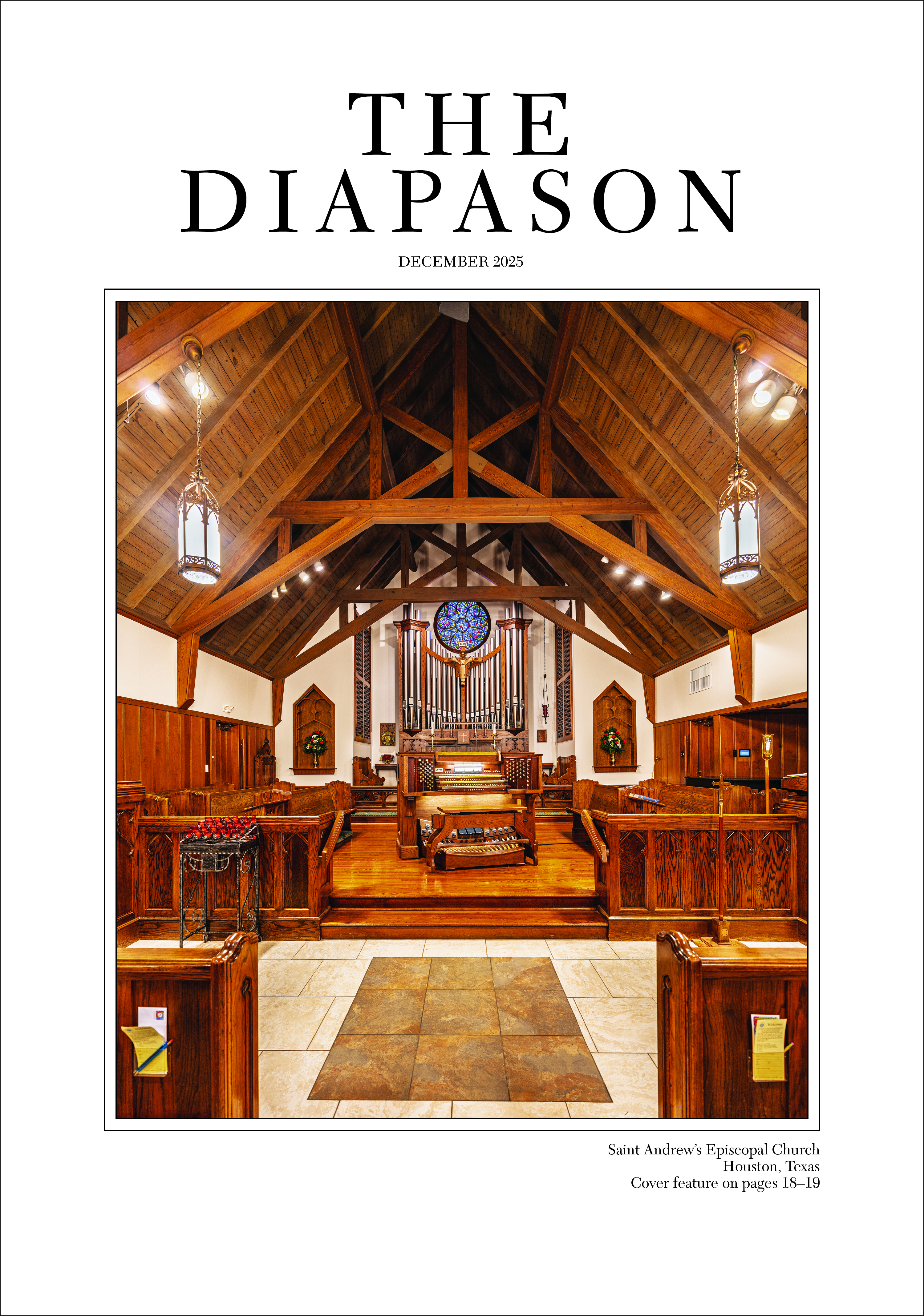A member of The Diapason’s 20 Under 30 Class of 2021, Curtis Pavey serves as assistant professor of piano pedagogy and performance at the University of Missouri. He completed harpsichord studies at Indiana University and the University of Cincinnati under Elisabeth Wright and Michael Unger. More information is available at www.curtispavey.com.

Bach Sous les Tilleuls (Bach Under the Lime Trees), Loris Barrucand and Clément Geoffroy harpsichordists. L’Encelade, ECL2303E, €18. Available from encelade.net.
Concerto pour orgue in A Minor, BWV 593; Nun komm’ der Heiden Heiland, BWV 659; Concerto pour orgue in D Minor, BWV 596; Actus Tragicus, BWV 106; Pedal-Exercitium, BWV 598; Passacaglia in C Minor, BWV 582; Wachet auf, ruft uns die Stimme, BWV 140; Concerto pour deux clavecins in C Minor, BWV 1060, Johann Sebastian Bach.
Harpsichordists Loris Barrucand and Clément Geoffroy wondered what Bach, his family members, and his musical colleagues performed at the Collegium Musicum concerts featuring more than one harpsichord. (In summer, these concerts were held in open air at the Grimma Gate, known for its enormous lime trees, hence the title of this recording.) This CD recording aims to answer that question featuring works for two harpsichords, most of which were arranged by the duo for the project. The result is an exciting collection featuring transcriptions of Bach’s works for organ as well as transcriptions of sacred music before concluding with the Concerto for Two Harpsichords in C Minor (without orchestra).
The recording opens with two of Bach’s transcriptions of concerti by Vivaldi, BWV 593 in A minor and BWV 596 in D minor. Originally, these pieces were transcribed for organ, but here, Barrucand and Geoffroy transcribed them again for two harpsichords, recalling the many transcriptions by Bach for solo harpsichord of Italian concerti. In their liner notes, the performers described the difficulty of balancing the textures to ensure the clarity of the melodic lines. They effectively navigated those challenges with an invigorating sound and refreshing tempi. Later in the recording, the duo arranged the Pedal-Exercitium, BWV 598, for two harpsichords as an introduction to the massive Passacaglia in C Minor, BWV 582—an unusual choice. Although I was initially skeptical of this decision, it was truly an interesting pairing and one that set up the extensive and powerful organ work in true fashion.
Interspersed between the transcriptions of these secular organ works are select sacred works, including two chorale preludes—Nun komm’ der Heiden Heiland, BWV 659, and Wachet auf, ruft uns die Stimme, BWV 140/BWV 645. The first of these was performed with great tenderness and enriched with appropriate ornamentation. The unique use of registration helped to bring out the chorale melody in the second work in a way that mimicked the registration effects of an organ. Also included was a transcription of “Sonatina” from Actus Tragicus, BWV 106. Though this work in its original form is composed for a small ensemble, the harpsichord duo did not leave anything lacking in their thick sound that equally balanced the instrumental lines.
The disc concludes with an exciting rendition of Concerto for Two Harpsichords in C Minor, BWV 1060. In this first-ever recording without orchestra, the duo shines in their marvelous attention to detail and clear affinity for ensemble playing. The second movement is gorgeously ornamented, and the final movement is swift with neat and impressive playing abounding.
The pair used two harpsichords after builder Jean Claude Goujon (French, mid-eighteenth century) including one built by Émile Jobin (1983) and one by Jean-François Chaudeurge (2014).
Barrucand and Geoffroy met as students at the Conservatoire National Supérieur de Musique in Paris and began collaborating officially as a duo in 2014. Their work together advocating for the expansion of duo harpsichord repertoire has led to collaborations with several dance companies to recreate ballets by Rebel, Boismortier, and Rameau (which have been released in recordings), along with this project and others devoted to the music of Bach.
For those familiar with these works in other forms, this disc is a refreshing take on classics reimagined. One can expect to hear much more from this accomplished pair.

